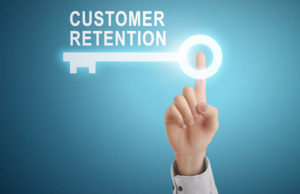
This story was originally published on June 14, 2013, and is brought to you today as part of our Best of ECT News series.
Building a customer relationship — the kind that lasts a long time — is a not an easy thing. There are lots of occasions where things can go awry, touch points where signals can get crossed and communications that can unwittingly turn a customer off.
In a lot of cases, the proverbial “customer lifecycle” doesn’t play itself out to its expected conclusion; instead, that conclusion is triggered by something the business does that brings the relationship to a premature end.
Do you know where these happen in your customer’s journey? Here are some places where you may be terminating relationships and preemptively killing sales without even realizing it.
In the Marketing Department
You don’t get a second chance to make a first impression, as the old saw says, and it’s true. How many times have you seen a marketing effort of some sort — advertising, content marketing, a speaker from a company — that makes you react, “that is a business I don’t want anything to do with?”
It happens with regularity to me, even when I’m the target audience for that message. Haphazard marketing is the terminal disease that can bring down a good product surrounded by otherwise good processes; it poisons the well that nurtures the rest of the business.
Today, one major hazard is the schism between two major components of marketing: corporate communications and lead generation. When businesses emphasize one over the other, the result is rarely good.
If communications gets the nod over lead generation, results and lead numbers are often insufficient for sales to succeed; when lead generation is the sole focus, communications suffers and the leads being collected lack the education and understanding of the business that will help sales close deals.
From a pure CRM perspective, there’s a similar balance in play. Having complete data about prospects who are already alienated from your business is useless, as is having incomplete data about prospects who are primed to buy. Strike the balance, and marketing can avoid killing customer relationships in the cradle.
In the Sales Pipeline
A customer’s bad sales experience is no longer something that costs you a single sale. Through social media, it can turn off vast swaths of your buying audience in record time.
Avoiding this means hiring and keeping the right talent, but it also means evolving your approach to fit with the times. No one wants to be sold at anymore — they never really did, although that was the classic sales approach of the past. Today, customers are looking for trusted partners who can help them understand product, process and the real value those things bring to their businesses. They also want to have their time and their attention respected; they don’t have endless hours to devote to watching your sales staff go through its choreography, because buying is, in most cases, not their primary job.
Using information about a prospect stored in CRM wisely can help your sales team negotiate this new landscape and approach customers in a more personalized way — and make the odds of closing that customer much better.
In Product Development
Nothing brings a relationship to an end faster than a product or service not delivering what the customer was expecting. There is no CRM answer to this; relationships exist predicated on the idea that you can deliver what you promise.
If you can’t — or if you stop being able to in the future — you’re going to destroy all your existing relationships, and you won’t be able to start any new ones until you’ve fixed this.
In Support Services
Customers often see service as an adjunct of the product. If the company can’t explain how to make a product do something or illustrate how best to use a service, why would the customer believe that what he’s bought can actually do what the seller has claimed?
Behind the scenes, of course, it’s more complicated than that. Layers of service processes can build up, staff can come and go, and success or failure can be based on the wrong metrics. All of this adds up to a dismal experience for the customer, and studies have shown the impact of this on customer relationships.
An April 2013 study by Dimensional Research showed the value of service in both sustaining and destroying relationships. The survey’s respondents said customer service was the No. 1 factor influencing trust in a vendor, and 62 percent of B2B customers said they purchased more after a good customer service experience. The flip side of this is that 66 percent of B2B customers stopped buying after a bad customer service interaction.
Getting service right requires a conscious effort in two key areas, and neither of them involve measuring call times or other productivity metrics. Leadership needs to think about the customer experience as it relates to service and to engineer processes that create a positive experience. Next, agents need to be fully trained and fully empowered to solve problems. Remember: Service is not a cost center. It’s a customer retention center.
On Social Media
When you see a business do something stupid or behave in a boorish way, does it make you want to buy from them? If you’re already buying from them, does it make you a little embarrassed to keep buying from them?
Of course, businesses doing illegal or unethical things have always killed relationships. These days, however, the ability to stain your public perception is easier than ever thanks to social media. A loutish employee speaking on behalf of the business in social media can drag your public perception down as quickly as he can hit the enter button.
This does not mean you should shrink from social media. As in the past, it means that you pick the right people for the right tasks. Since social media is so universal, it also means that you create a policy around social media, so all your employees are aware of their potential impact on your public image.
I have frequently written that the first step in a healthy CRM effort is to hire the right people. That’s never been more true than it is today.






















































